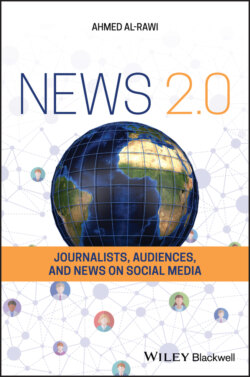Читать книгу News 2.0 - Ahmed Al-Rawi - Страница 7
Preface
ОглавлениеThis book provides an analytical assessment of recent developments, debates, and research on news, social media, and 2.0 news organizations. The main argument, which is drawn from empirical evidence, is that news production is largely biased, while news consumers are now mostly confined to their filter bubbles despite the widespread proliferation of news on social media. From the news‐consumers side, this often leads to the dissemination of disinformation as well as misinformation, phenomena related to the term “fake news”: a phrase deployed with divergent meanings and intentions. This is an important field of research due to its direct impact on democracy and politics, especially with the increasing popularity of clickbait and the influence of bots on Social Networking Sites (SNS).
The book focuses on three main areas, with emphasis on non‐Western media outlets: content (news), audiences or “prosumers” (networked audiences), and producers (news organizations and journalists). Prosumers are not only consumers of news but also producers of data (posts and comments) and metadata (clicks) who exhibit their engagement with news organizations and their news productions in different ways. Chapter 1 provides an introduction to the meaning of News 2.0 and the advent of new technologies that are shaping the way news is produced and packaged, while Chapter 8 discusses mobile news: the future of news consumption.
I would like to acknowledge the generous assistance of Simon Fraser University's Rapid Response Fund, which provided the financial means to cover the costs of the copy editor. I would also like to thank Derrick O'Keefe, a graduate student at SFU, for his editorial assistance. Finally, versions of most of this book's materials have been previously published as journal articles, as indicated in each relevant chapter. What motivated me to produce this book is the thematic nature of the previous studies that I conducted using, primarily, computational journalism methods and cross‐national comparative research with emphasis on news values theory. This combination of quantitative and qualitative analysis, with a focus on media produced and consumed outside of Europe and North America, remains all too rare. It is my hope that this humble contribution will encourage other researchers, especially from the global south, to pursue similar projects in the study of international news flows and journalism. Finally, this book is dedicated to my mother as a way to express my gratitude for her love, generosity, and tremendous sacrifices.
